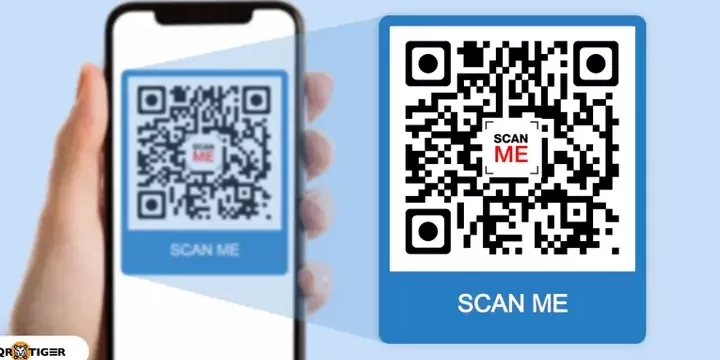Did you know that a QR code isn’t just a square of black and white squiggles? It’s a two-dimensional barcode that can store a vast amount of information such as links to websites, text, phone numbers, or email addresses. And that’s not all! Check out these fascinating facts about QR codes:
- QR codes can hold much more information than traditional barcodes.
- The first QR code was created in Japan in the 1990s by a subsidiary of Toyota.
- You can customize QR codes with different colors and designs.
- QR codes are a fantastic tool for marketing purposes, linking to exclusive promotions, or discounts in stores.
- QR codes have seen a surge in usage during the pandemic as a way to share menus or information without coming into contact with physical menus or brochures.
With all this in mind, QR codes are an excellent way to engage with your audience in a more innovative way. So what are you waiting for? Start exploring the exciting possibilities of QR codes today!
The Ultimate Guide to QR Codes: Understanding, History and Best Practices
If you’ve ever come across a square-shaped barcode that looks like a jigsaw puzzle, you’ve seen a QR code. QR codes are two-dimensional barcodes that can store a lot of data in a small space. They have become increasingly popular in recent years, especially in marketing campaigns, product packaging, and event registration. In this article, we’ll cover the basics of QR codes, their history, how they work, their benefits and limitations, and some best practices to help you make the most of them.
Understanding QR Code Basics
Simply put, a QR code is a type of barcode that consists of black squares on a white background. They are called “quick response codes” because they can be scanned quickly using a smartphone or a QR code reader. The information stored in a QR code can range from website URLs, contact information, social media links, product information, and more.
QR codes can be customized with different colors and images, but they must still adhere to certain technical specifications to ensure they can be scanned correctly. QR codes have error correction codes, which means they can still be read even if some parts of the code are damaged or missing.
QR Code Types
There are two main types of QR codes: static and dynamic. Static QR codes contain unchanging information, while dynamic QR codes can be edited and updated even after they’ve been printed. This makes dynamic QR codes ideal for marketing campaigns and event registration, as you can track and measure their success.
The Origin and History of QR Codes
QR codes were invented in 1994 by a Japanese company called Denso Wave. They were originally used to track car parts during manufacturing, but soon found their way into other industries. QR codes gained popularity in Japan, where they became widely used for mobile payments, advertising, and promotions.
It wasn’t until the widespread adoption of smartphones that QR codes began to gain global recognition. In recent years, QR codes have become a staple in marketing campaigns, retail, and even art.
How QR Codes Work and What They’re Used For
QR codes work by using a matrix of black and white squares to store data. When a QR code is scanned using a smartphone, the camera captures the code, and the device decrypts the information. The scanning device must have a QR code reader or a relevant app installed to recognize the code.
QR codes are used for a variety of purposes, including:
- Marketing campaigns
- Product packaging
- Event registration and ticketing
- Mobile payments
- Contact information sharing
Benefits and Advantages of Using QR Codes
QR codes offer several benefits over traditional barcodes and other types of visual codes. These include:
Size and Flexibility: QR codes can store a lot of information in a small space, and they can be customized with different colors and images.
Scanning Speed: QR codes can be scanned quickly and easily, which makes them ideal for retail and marketing.
Tracking and Analysis: Dynamic QR codes can be tracked and analyzed to determine their success in a marketing campaign or event.
QR Codes vs. Traditional Barcodes
QR codes are often compared to traditional barcodes, but they offer some key differences. While traditional barcodes store only small amounts of information, QR codes can store more data, including website URLs, location information, and more in a smaller space.
QR codes can be scanned using a smartphone camera, while traditional barcodes require a dedicated scanner. QR codes can also be customized, while traditional barcodes cannot be altered.
Challenges and Limitations of QR Codes
While QR codes offer numerous benefits, they also have some challenges and limitations. One challenge is that not all smartphones come with a built-in QR code reader, which means users must download a separate app to scan the code.
QR codes also require a stable internet connection to work correctly. As with any technology, there is also the risk of data breaches and hacking if the QR code is improperly used.
QR Code Best Practices and Tips for Success
To get the most out of QR codes, it’s essential to follow some best practices and tips:
- Test the QR code and ensure it works correctly before printing or sharing it
- Place the QR code in a visible location with good lighting
- Provide a clear call to action to encourage users to scan the code
- Use dynamic QR codes to track and analyze their success
- Ensure the QR code leads to a mobile-friendly website or landing page
In conclusion, QR codes have become a powerful tool for businesses and individuals alike. They offer numerous benefits, from quick scanning speeds to data tracking and analysis. However, to make the most of QR codes, it’s essential to follow best practices and tips to ensure they are used effectively and efficiently.





